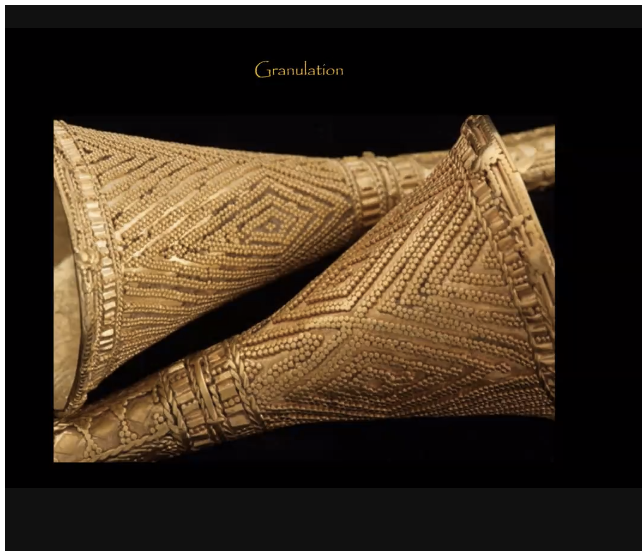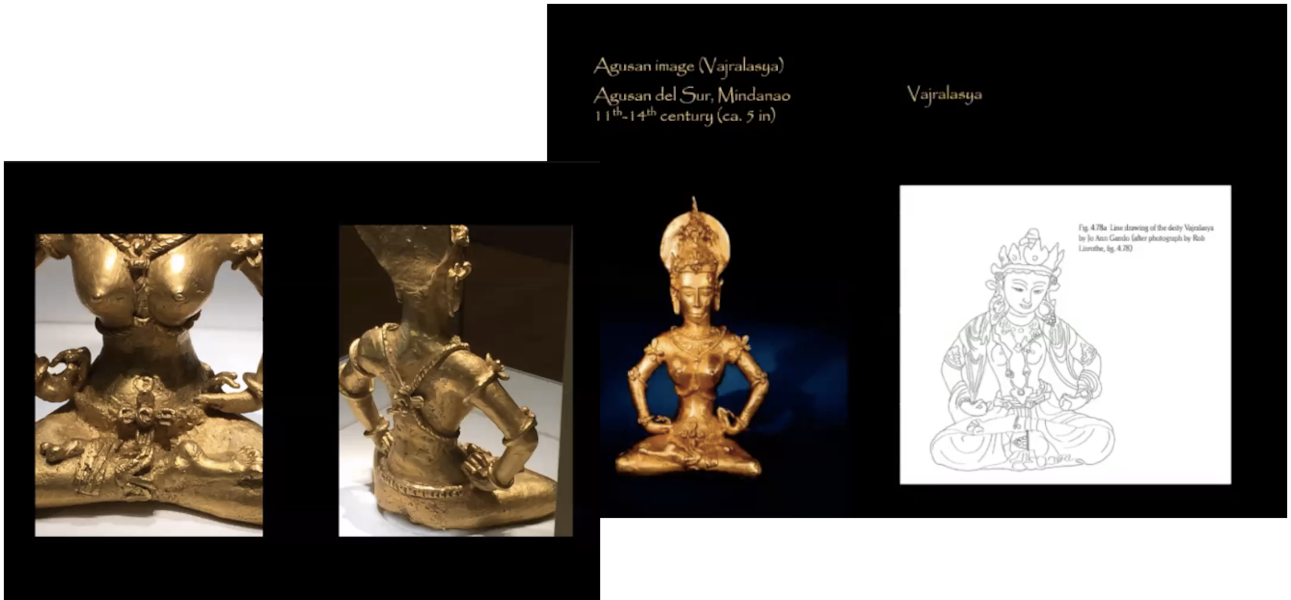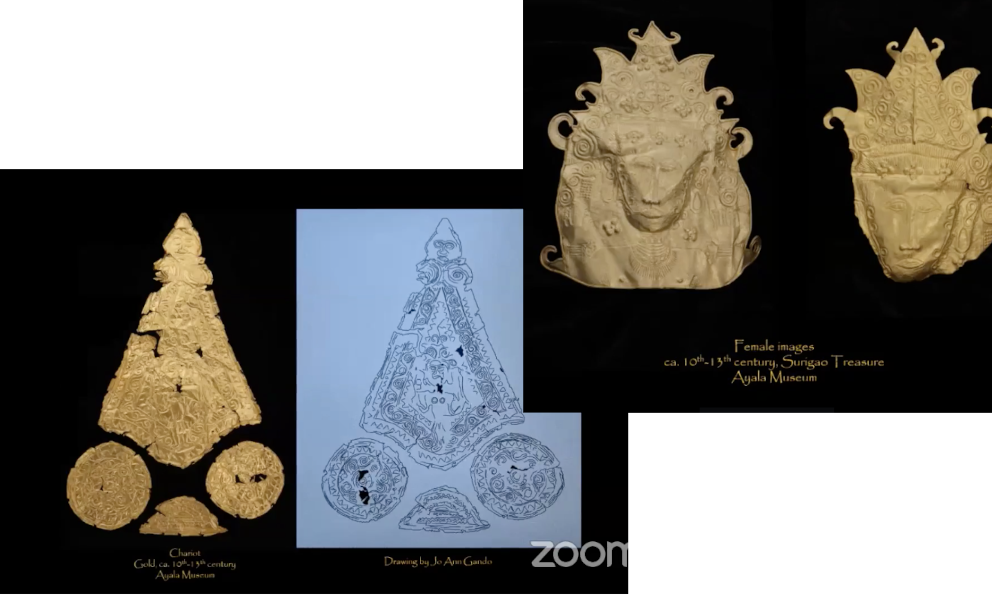All images courtesy of the Ayala Museum
The National Museum Eastern-Northern Mindanao hosted a webinar on early gold in Butuan and Surigao, with Florina H. Capistrano-Baker, PhD who discussed the Hindu-Buddhist presence in ancient Butuan. A former museum director of the Ayala Museum, Capistrano-Baker is one of the editors of Philippine Ancestral Gold, 2011.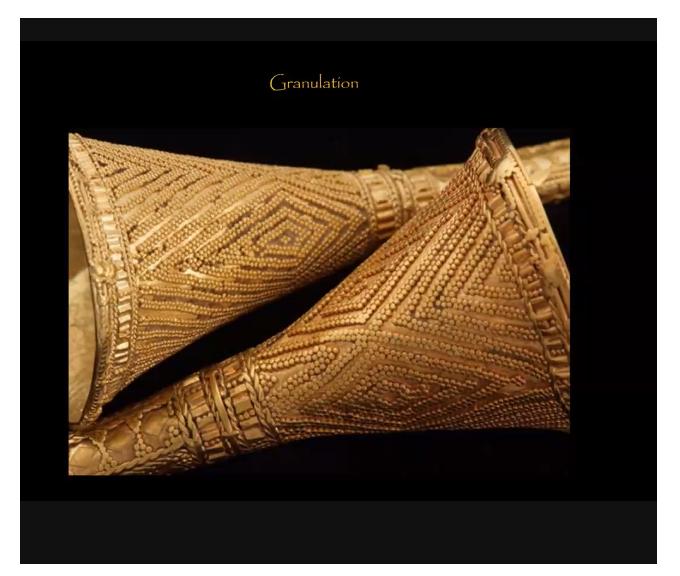 Amidst the dearth of historical records, gold artifacts, and other archaeological finds point to Butuan in northeast Mindanao as a major trading port in the 10th century and “as a thriving polity with a hierarchical social structure.” It was trading with the Srivijayan empire (Indonesia),which had extensive ties with India and China. Butuan traded with the Indianized states of Southeast Asia such as Java, Borneo, Champa (Vietnam), and Cambodia and sent tribute missions to China, as recorded in the annals of the Song Dynasty.
Amidst the dearth of historical records, gold artifacts, and other archaeological finds point to Butuan in northeast Mindanao as a major trading port in the 10th century and “as a thriving polity with a hierarchical social structure.” It was trading with the Srivijayan empire (Indonesia),which had extensive ties with India and China. Butuan traded with the Indianized states of Southeast Asia such as Java, Borneo, Champa (Vietnam), and Cambodia and sent tribute missions to China, as recorded in the annals of the Song Dynasty.
Ancient Butuan
Antonio Pigafetta, Magellan’s chronicler, described Butuan as a place where “pieces of gold, of the size of walnuts or eggs” were found. Upon meeting the heavily-tattooed Rajah Siagu, the ruler of Butuan and Calagan (Caraga), Pigafetta wrote that he wore “two large golden earrings” and his dagger, “the haft of which was somewhat long and all of gold…” Moreover, Rajah Siagu had three spots of gold on every tooth, and his teeth appeared as if bound with gold.”
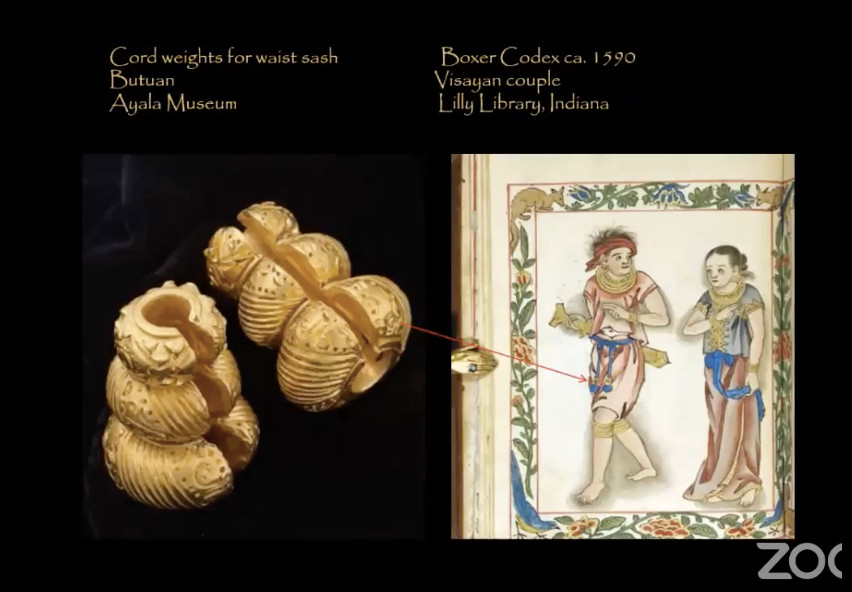
Capistrano-Baker noted the striking similarities between the material culture of Mindanao and Java that suggested close precolonial ties and that Indonesian expression of Hindu and Buddhist concepts is another way of looking at early Philippine gold.
Ancient Butuan used gold as royal adornment that included gold crowns and headbands, necklaces, sashes, waistbands, ear ornaments, and bracelets and to fashion religious images. It was also used in funerary practices such as death masks and as covering for the eyes, nose, and mouth. Gold signified wealth, prestige, and power by ancient Filipinos as depicted in the Boxer Codex, ca. 1590.
Exquisite metalwork
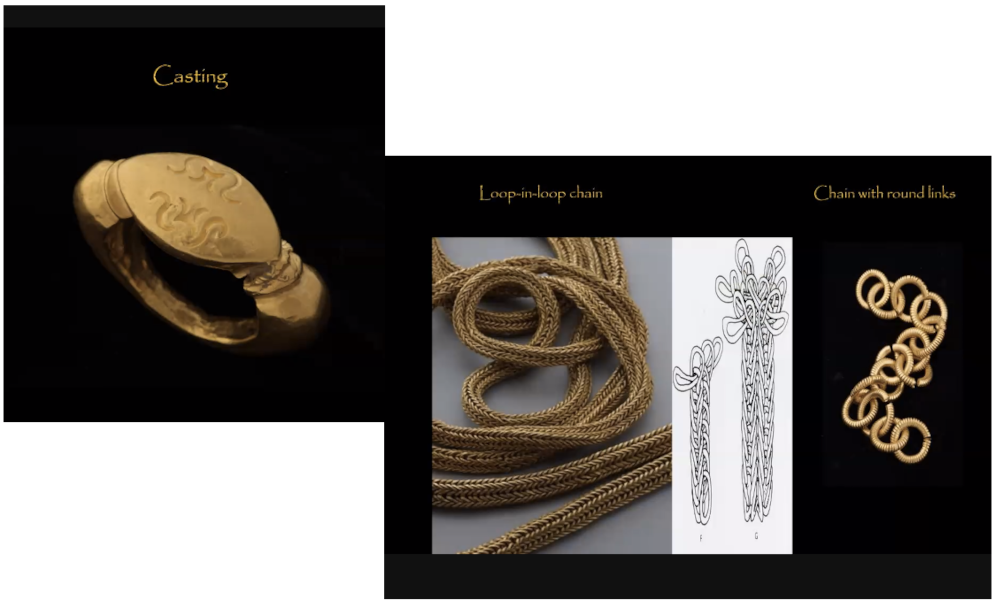 Butuan craftsmen used and combined goldsmithing techniques such as casting, chasing, repoussé, and granulation in the most sophisticated way. They hammered gold into thin sheets or foil; created patterns on the surface or in repoussé; moulded gold, wove with gold wire, formed loop-in-loop gold chains of all kinds; and, used granulation, the most difficult technique, where a surface is covered with globules of gold.
Butuan craftsmen used and combined goldsmithing techniques such as casting, chasing, repoussé, and granulation in the most sophisticated way. They hammered gold into thin sheets or foil; created patterns on the surface or in repoussé; moulded gold, wove with gold wire, formed loop-in-loop gold chains of all kinds; and, used granulation, the most difficult technique, where a surface is covered with globules of gold.
Hindu-Buddhism
Using four gold artifacts as examples (Agusan Image, Kinnari, Chariot, Female Head), Capistrano-Baker discussed the imprint of Hindu-Buddhism in the past.
The Agusan image (Vajralasya): A solid cast figure alloyed in bronze and silver used in the 11th -14th century and seated in a Vajrasana or diamond position, with arms on the waist, and fingers curled inwards. Weighing two kilograms and about five inches in height, it is identified as Vajralasya (The Gesture of Love). Local residents call her (inaccurately) as the Golden Tara of Agusan.
Found ashore in Agusan River in 1917, it was first offered to the National Museum but they had no funds. The wife of then Governor General Leonard Wood raised money to purchase it and donated it to the Field Museum of Chicago where it is on permanent exhibit.
Kinnari vessel: A ritual vessel, it is shaped as a half-bird and half-female celestial being, with the cast human head exquisitely shaped, its hair pulled in a bun, and decorated with floral ornaments. The body is worked in repoussé, and chased with delicate feather wings.
Its wings and tail had been cut off, most probably melted by pothunters. Accidentally discovered in Surigao del Sur in 1981, it may have been used as an oil lamp but its function remains unclear.
A female head: A plaque of a female head with wavy hair, most probably a devotional object. She may portray a localized version of the Hindu goddess Kali, Capistrano-Baker explained. Kali’s distinctive attribute is her flame-like hairstyle.
Chariot plaque: Its small size suggests a ritual object of devotion. It might refer to the Konark temple in Odisha, India dedicated to the Hindu sun god Surya. The temple itself is a representation of Surya’s chariots and used as a navigation landmark by mariners sailing to Calcutta.
Sanskrit loanwords
Hindu influences had spread to Borneo, Mindanao, and Visayas and to the northernmost part of Luzon, and supported linguistically by place names, family names, and names of deities.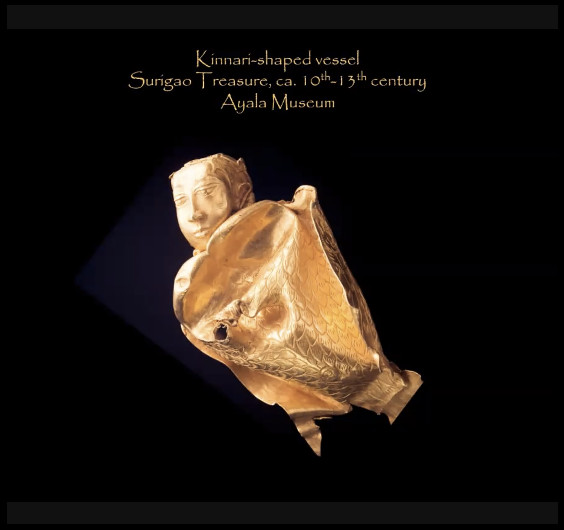
Place names include Kalinga, Naga, Linga, and Diwata and elite titles such as lacsamana, hari, and rajah (a Hindu word for king, and not Islamic, as commonly assumed). A female divinity is Diwata and the Supreme Being is Bathala, from the Sanskrit batthara.
Other Sanskrit loanwords include budhi, dukha, dalita, katha, likha, mukha, masaya, saksi, sampalataya, sabon, maharlika, and many more.
“We were not savages…”
In the end, Capistrano-Baker raised the need for elementary textbooks that depict precolonial Filipinos based on historical facts and that ancient Butuan bore witness to an advanced society with cultural ties to other Southeast Asian cultures. The Philippines had sophisticated material cultures that existed long before colonization, she added. In other words, we need to get our wonderful history straight.
